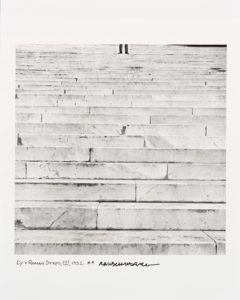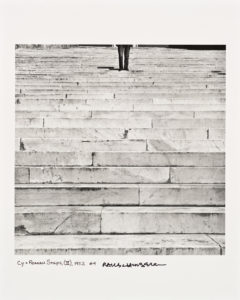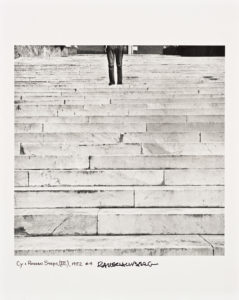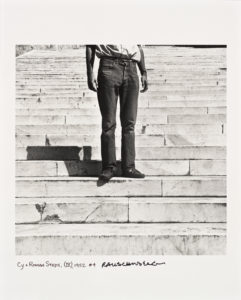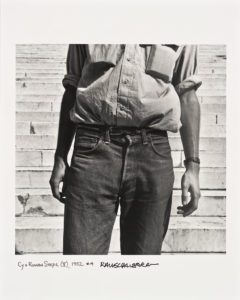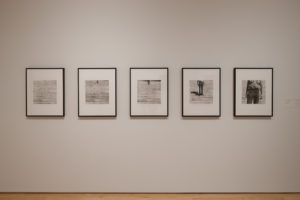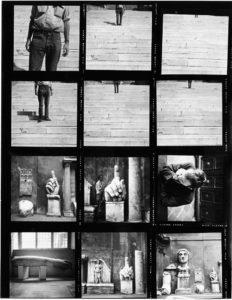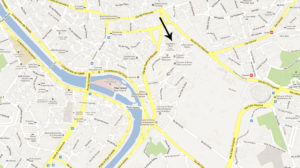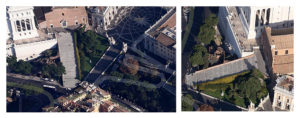Ownership History
San Francisco Museum of Modern Art, purchase through a gift of Phyllis Wattis, 1998
Exhibition History
Robert Rauschenberg: The Early 1950s, Corcoran Gallery of Art, Washington, D.C., June 15–August 11, 1991. Traveled to: The Menil Collection, Houston, September 27, 1991–January 5, 1992; Museum of Contemporary Art, Chicago, February 8–April 19, 1992; San Francisco Museum of Modern Art, May 14–August 16, 1992; Guggenheim Museum SoHo, New York, October 24, 1992–January 24, 1993.
Robert Rauschenberg: A Retrospective, Solomon R. Guggenheim Museum, New York, September 19, 1997–January 7, 1998. Traveled to: The Menil Collection, Houston, February 13–May 17, 1998; Museum Ludwig, Cologne, Germany, June 27–October 11, 1998; Guggenheim Museum Bilbao, Spain, November 21, 1998–March 7, 1999.
Robert Rauschenberg, San Francisco Museum of Modern Art, May 7–September 7, 1999.
75 Years of Looking Forward: The Anniversary Show, San Francisco Museum of Modern Art, December 19, 2009–January 16, 2011.
In addition to appearing in the special exhibition listed above, Cy + Roman Steps (I–V) was shown in SFMOMA’s galleries in 2004 as part of Matisse and Beyond: The Painting and Sculpture Collection, a rotating presentation of the permanent collection.
This listing has been reviewed and is complete as of August 31, 2016.
Publication History
Andrew Forge, Rauschenberg (New York: Harry N. Abrams, 1969), 85–90 (ill.).
Robert Rauschenberg Photographs (New York: Pantheon Books, 1981), n.p. (ill.).
Rauschenberg Fotografia (Florence: Archivi Alinari, 1981), n.p. (ill.).
Rauschenberg Photographe (Paris: Centre Georges Pompidou, Musée National d’Art Moderne, 1981), n.p. (ill.).
Walter Hopps, Robert Rauschenberg: The Early 1950s (Houston: Houston Fine Art Press, 1991), 23, 109, 120–21 (ill.), 160.
———, Robert Rauschenberg: The Early 1950s (Houston: Menil Foundation, 1991), 8, 21, 36. Produced for the Menil presentation only.
Frances Colpitt, “Rauschenberg: In the Beginning,” Art in America 80, no. 4 (April 1992): 128 (ill.).
Jill Johnston, Jasper Johns: Privileged Information (London: Thames and Hudson, 1996), 136.
Richard Gruber, Robert Rauschenberg: Through the Lens (Kansas City: University of Missouri, 1997), 15, 28–29 (ill.).
Walter Hopps and Susan Davidson, eds., Robert Rauschenberg: A Retrospective (New York: Solomon R. Guggenheim Museum, 1997), 72–73 (ill.).
Alice Thorson, “Rauschenberg gifted in vernacular of photography; Exhibit offers solid look at that aspect of painter’s talent,” Kansas City Star, April 4, 1997.
Elisabeth Lebovici, “Rauschenberg à grande échelle,” Libération, September 30, 1997.
Barbara A. MacAdam, “Robert Rauschenberg,” ARTnews 96, no. 10 (November 1997): 221.
James Fenton, “The Voracious Eye,” New York Review of Books, November 6, 1997, 10.
Shaila Dewan, “Culture Clash,” Houston Press, February 26, 1998.
Joachim Jäger, Das zivilisiert Bild: Robert Rauschenberg und seine Combine-Paintings der Jahre 1960–1962 (Klagenfurt, Austria: Ritter Verlag, 1999), 178, 179.
Robert Rauschenberg, video interview by David A. Ross, Walter Hopps, Gary Garrels, and Peter Samis, San Francisco Museum of Modern Art, May 6, 1999. Unpublished transcript, SFMOMA Research Library and Archives, N 6537 .R27 A35 1999a, 33–36.
Kenneth Baker, “Rauschenberg Coup at SFMOMA: ‘Port of Entry’ a Major New Work,” San Francisco Chronicle, May 8, 1999.
David Bonetti, “Rauschenberg Coup Cements SFMOMA’s Ascendance,” San Francisco Examiner, May 28, 1999.
Susan Davidson and David White, eds., Rauschenberg (Ferrara, Italy: Ferrara Arte, 2004), 28–29 (ill.).
Paul Schimmel, ed., Robert Rauschenberg: Combines (Los Angeles: Museum of Contemporary Art, 2005), 260–61 (ill.), 276–77, 282.
Sam Hunter, Robert Rauschenberg: Works, Writings and Interviews (Barcelona: Ediciones Polı́grafa, 2006), 120–21 (ill.).
Branden W. Joseph, “The Gap and the Frame,” October 117 (Summer 2006): 62, 65.
Nicholas Serota, Nicholas Cullinan, Tacita Dean, et al., Cy Twombly: Cycles and Seasons, ed. Nicholas Serota (London: Tate Modern, 2008), 125n13.
Nicholas Cullinan, “Double Exposure: Robert Rauschenberg’s and Cy Twombly’s Roman Holiday,” Burlington Magazine 150, no. 1264 (July 2008): 462, 463 (ill.).
Janet Bishop, Corey Keller, and Sarah Roberts, eds., San Francisco Museum of Modern Art: 75 Years of Looking Forward (San Francisco: San Francisco Museum of Modern Art, 2009), 432.
Susan Davidson, “Robert Rauschenberg,” Guggenheim Museum Bilbao Collection (Bilbao: Guggenheim Bilbao, 2009), 95n5.
“SFMOMA 75th Anniversary: David White,” interview conducted by Richard Cándida Smith, Sarah Roberts, Peter Samis, and Jill Sterrett, 2009, Regional Oral History Office, The Bancroft Library, University of California, Berkeley, 2010, 30, 39, 40, 53, 56–57. Accessed June 23, 2013. www.bancroft.berkeley.edu/ROHO/projects/sfmoma/interviews.html
Margaret Tedesco, “Collection Rotation: Margaret Tedesco,” Open Space (SFMOMA blog), December 13, 2010, Cy + Roman Steps II [SFMOMA 98.297.B] (ill.). Accessed June 23, 2013. https://blog.sfmoma.org/2010/12/collection–rotation24/.
Nicholas Cullinan, Robert Rauschenberg: Photographs 1949–1962, ed. Susan Davidson and David White (New York: Distributed Art Publishers, 2011), 26, 136–37 (ill.).
Robert Rauschenberg: North African Collages and Scatole Personali ca. 1952 (New York: Craig F. Starr Gallery, 2012), n.p.
Robert Storr, Selections from the Private Collection of Robert Rauschenberg (New York: Gagosian Gallery, 2012), 31.
Catherine Craft, Robert Rauschenberg (London: Phaidon, 2013), 24, 34–35 (ill.).
Jacqueline Samy, “Auditions in the Carnal House: Eroticism and Art,” in Rauschenberg: Collecting & Connecting, ed. Kristine Stiles (Durham, NC: Nasher Museum of Art, 2014), 30; online edition (ill.) Accessed February 9, 2015. https://shuffle.rauschenbergfoundation.org/exhibitions/nasher/essays/Samy_auditions-in-the-carnal-house.
Diana Tuite, ed., Brand-New & Terrific: Alex Katz in the 1950s (Waterville, ME: Colby College Museum of Art, 2015), 57 (ill.).
Tamara Trodd, The Art of Mechanical Reproduction: Technology and Aesthetics from Duchamp to the Digital (Chicago: University of Chicago Press, 2015), 122, 123 (ill.), 124, 125.
This listing has been updated since the launch of the Rauschenberg Research Project and is complete as of August 31, 2016.
